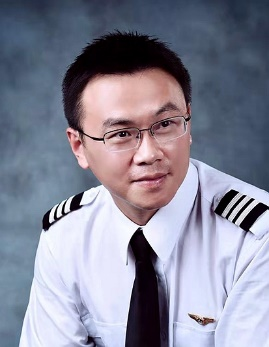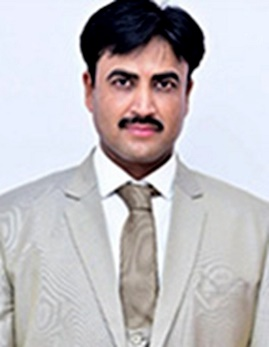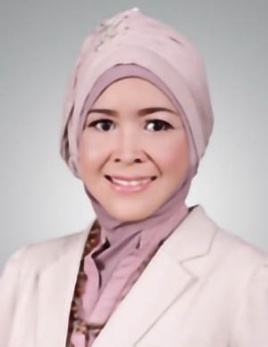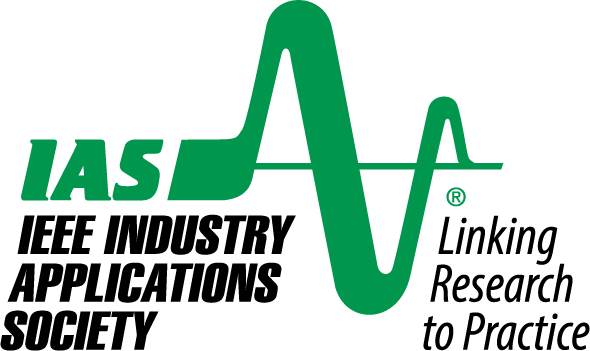Speech Title: Development Status and Suggestions of Sustainable Aviation Biofuel

Mr. ZHOU Mu
Department of Airworthiness, Civil Aviation Management Institute of China, Beijing, China
Abstract: Sustainable aviation biofuel (SABF) is a promising solution for aviation emission issues, but its sustainability and related technical standards need to be further studied. With sustainability and technical standards as key factors, this work firstly reviewed the mechanism of the Carbon Offsetting and Reduction Scheme for International Aviation and its impact on China; then introduced the International Civil Aviation Organization (ICAO) SABF greenhouse gas (GHG) emission value and emission reduction calculation method, analyzed the similarities and differences between ICAO and China GHG emission reduction calculation, discussed the Chinese and international technical standards for aviation biofuel verification, briefly described the application of aviation biofuel in and outside of China; finally reviewed the main challenges for fostering aviation biofuel in China, such as imbalance between demand and supply. To deal with these problems, some suggestions for SABF development were presented: Enhance integration between international and domestic carbon markets, accelerate the construction of aviation biofuel sustainability certification system, establish the minimum mixing ratio for SABF, etc.
Speech Title: Cellulose/Polyvinylpyrrolidone-doped cadmium sulphide quantum dots and their applications

Dr. Muhammad Ikram
Department of Physics, Government College University Lahore, Pakistan
Short Biography
Muhammad Ikram obtained Master degree (M. Phil Physics) from BZU Multan, Pakistan in 2010. He obtained his PhD degree in Physics from Department of Physics, Government College University (GCU) Lahore through Pak-US joint project between Department of Physics, GC U Lahore, Pakistan and University of Delaware, USA in 2015. In 2017, Ikram joined Department of Physics, GC University Lahore as Assistant Professor Physics in 2017. Ikram published over 150 manuscripts in international well reputed journal, 17 book chapters and three international books. Ikram received Seal of Excellence Marie Skłodowska‐Curie Individual Fellowship in 2017 and 2020. His research work involves the synthesis and characterization of inorganic semiconductor nanomaterials, sensor, 2D materials for water treatment and optoelectronic applications.
Abstract: Facile and control sized cadmium sulphide (CdS) quantum dots (QDs) and cellulose nanocrystals grafted polyvinylpyrrolidone (CNC-g-PVP) doped CdS QDs were prepared via co-precipitation. Doped and Undoped CdS QDs exhibited excellent optical properties. The proposed method is effective in removing industrial polluted water and bactericidal treatments of organic contaminants such as methylene blue (MB). In order to determine the structural, optical, and morphological properties of the produced samples, a number of different characterization procedures were utilized. The X-ray diffraction (XRD) pattern confirmed the structure to be hexagonal, and there was no discernible shift in the spectrum as a result of the addition of 2, 4, or 6% doping. Doping causes a blueshift in the absorption pattern, which is described by the UV–vis spectrophotometer. This shift leads to an increase in band gap energy (Eg). In comparison to the acidic medium, the findings of the catalytic activity (CA) against MB in basic and neutral media were impressive. In addition, the bactericidal potential of the doped sample (6%), which was tested against Staphylococcus aureus (S. aureus) and Escherichia coli (E. coli), both of which are Gram-positive bacteria, exhibited significantly higher inhibition zones. These zones measured 5.25 mm and 4.05 mm, respectively.
Speech Title: Green Energy Via Nanotechnology: Future Applications and Perspectives

Prof. Dr. Mushtaq Ahmad
Biofuel and Green Energy Lab, Department of Plant Sciences, Quaid-i-Azam University, Islamabad, Pakistan
Short Biography
Professor Dr. Mushtaq Ahmad is currently working as Director QAU Botanical Garden and Herbarium (ISL), Director Technology Science Park (QAU) and Chairman Department of Plant Sciences, Faculty of Biological Sciences, Quaid-i- Azam University Islamabad. Prof. Dr. Ahmad has over 770 publications (citations ±13008, h-index 56, i10-index 294) in diverse fields of Plant Sciences including 696 research publications, 23 international books, 20 chapters in books published largely by Elsevier, Springer, Taylor & Francis, Wiley etc. across the world including Asia, Europe, USA and Africa. He has successfully supervised/produced 32 PhD, 100 M.Phil. 55 M.Sc. and 10 BS research scholars in advanced areas of Plant Systematics & Biodiversity. He has also been awarded various national and international awards in recognition of his outstanding contributions in the field of science and technology including Top 2% influential scientist of the World (2020); Young Research Scholar Award by HEC (2019); Highly Cited Research Paper Award by Elsevier and Willey (2019); Young scientist award by CAS – PIFI – China (2018), Young membership award by Pakistan Academy of Sciences, (2016); Productive scientist awards by PCST (2009 to date); TTS Performance based Awards (2010 to date); Post Doc. Fellowship by TWAS-Malaysia (2012); Best book award by HEC (2013); Best research paper award by HEC (2011); Gold Medal award by Pakistan Academy of Sciences (2011). He is the member of many international and national academic bodies. Prof. Ahmad has been awarded with many research grant projects funded by GBIF, BIFA (Japan-USA), NAS-USA, CAS-China, Mevlana-Turkey, PAS, HEC and TWAS. These research grants helped Prof. Ahmad to establish modern digital Herbarium (ISL), Botanical Garden, Technology Science Park, Melissopalynology, Aerobiology, Nutraceutical and Green Biofuel research laboratories. He has organized 12 and attended 75 International/National Conferences as Keynote speaker. He has been hosted a series of TV programs and YouTube Channel (Miracle Herbal Diversity) to aware Global and Pakistani communities, farmers linkages with academia and industries to use plant biodiversity for socio-economic uplifting. He is the active advisory board member in flora of PAN-Himalaya (Asia) & also contributor for medicinal plants naming (MPN), Kew-UK, IUCN member and PAS member. He is the recognized reviewer and editorial board member of many world reputed ISI Journals and Book series. He is the expert member of DTRC, Selection Board, Board of Studies and Examiner in different universities and institutions in the country.
Abstract: The global energy land scape will change more in the next ten years than in the previous hundred. The world is moving towards greener energy obtained from renewable energy sources. Powering A sustainable and profitable energy via green nanotechnology will be a solution to build a greener and more sustainable future. Until now, plants are still highly esteemed all over the world as a rich source of greener energy. Over the past few decades, researchers have focused on green energy, from botanical sources. Green chemistry, as a work philosophy, has contributed to the design and application of safer and green processes and products. This study provides an overview for the green chemistry and green engineering principles that could be instrumental in sustainable biofuel process development. In the current scenario of energy security, the pursuit of alternative energy sources is very important to utilize the non-edible plant resources via phytochemical screening leads to renewable and cleaner energy. Decarbonization is mission-critical for the planet. A viable solution to present-day problems like fuel crises and environmental pollution is to move away from fossil fuels towards renewable energy resources. The main focus of this project is on the biosynthesis via nanotechnology using advanced analytical techniques (TLC, HPLC, GC-MS, FT-IR, NMR, EDX, SEM) and biological techniques to isolate some novel bioactive phytochemical entities for future applications in cleaner energy production. Currently, academia, society, industry, and government are concerned about the application of greener and cleaner principles. The worldwide concern for the sustainable future requires balanced between legacy systems, emerging technologies, business, economy while better managing assets risk and carbon emissions.
Speech Title: Characteristics of Hydrolytic Indigenous Bacteria as Degradation Agent of Hospital Wastewater: A Case Study in Central Java

Dr. Stalis Norma Ethica
Postgraduate Department, Magister Study Program of Clinical Laboratory Science; Universitas Muhammadiyah Semarang, Central Java, Indonesia
Short Biography
Dr. Stalis Norma Ethica is a full-time lecturer and researcher with industrial laboratory experience. She focuses in the utilization of bacterial cells and enzymes as bioremediation, medicinal, and diagnostic agents, supported by encapsulation and genetic engineering technologies. She has been a full-time lecturer (assistant professor) in the Postgraduate Program of Magister of Clinical Medicine since 2019. The Indonesian Ministry of Research and Higher Technology funded her works on developing bioremediation agents for hospital wastewater from indigenous bacteria and developing antithrombosis and antibiofilm agents from marine bacterial enzymes.
Abstract: Hospital wastewater is a source of hazardous matters including toxigenic chemicals and pathogenic microorganisms. In the last few years, the initial steps in developing bioremediation agent to treat hospital wastewater have been initiated. The strategy was focused on degrading organic matters in order to improve BOD parameter of hospital wastewater and repressing the growth of pathogenic bacteria present in the waste by propagating the population of beneficial bacteria. Recent studies have been conducted to isolate and characterize hydrolytic indigenous bacteria from wastewater samples obtained from hospitals in the Central Java. In the process, it was found that hydrolytic indigenous bacteria demonstrated the desirable characteristics to be used as degradation agent. The characteristics include Low pathogenicity, ability to produce multiple hydrolytic enzyme production, ability to synergically work as consortium, ability to improve BOD (Biological Oxygen Demand) parameter, and versatility to be microencapsulated. Such characteristics make them a great candidate of bioremediation agent.


